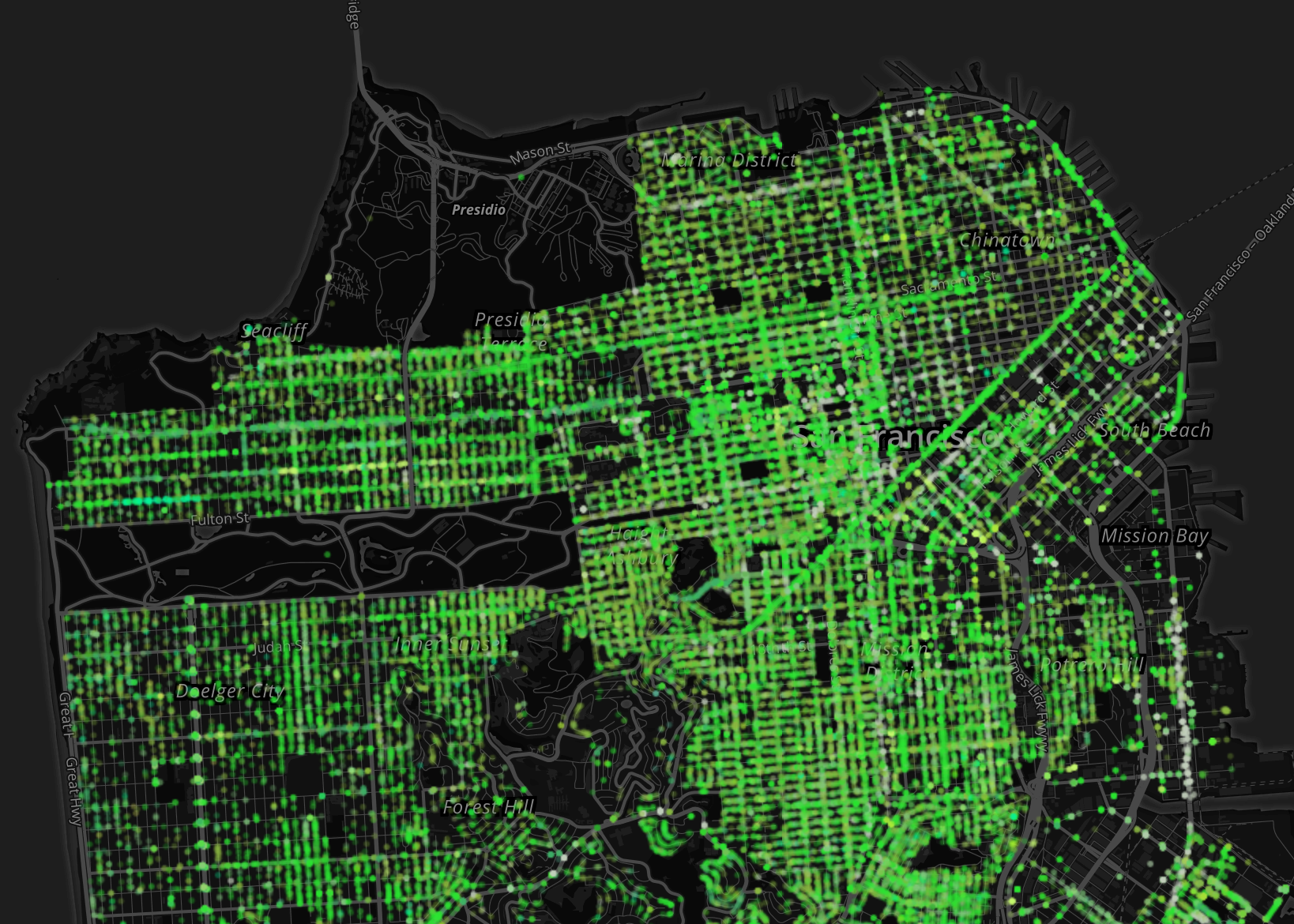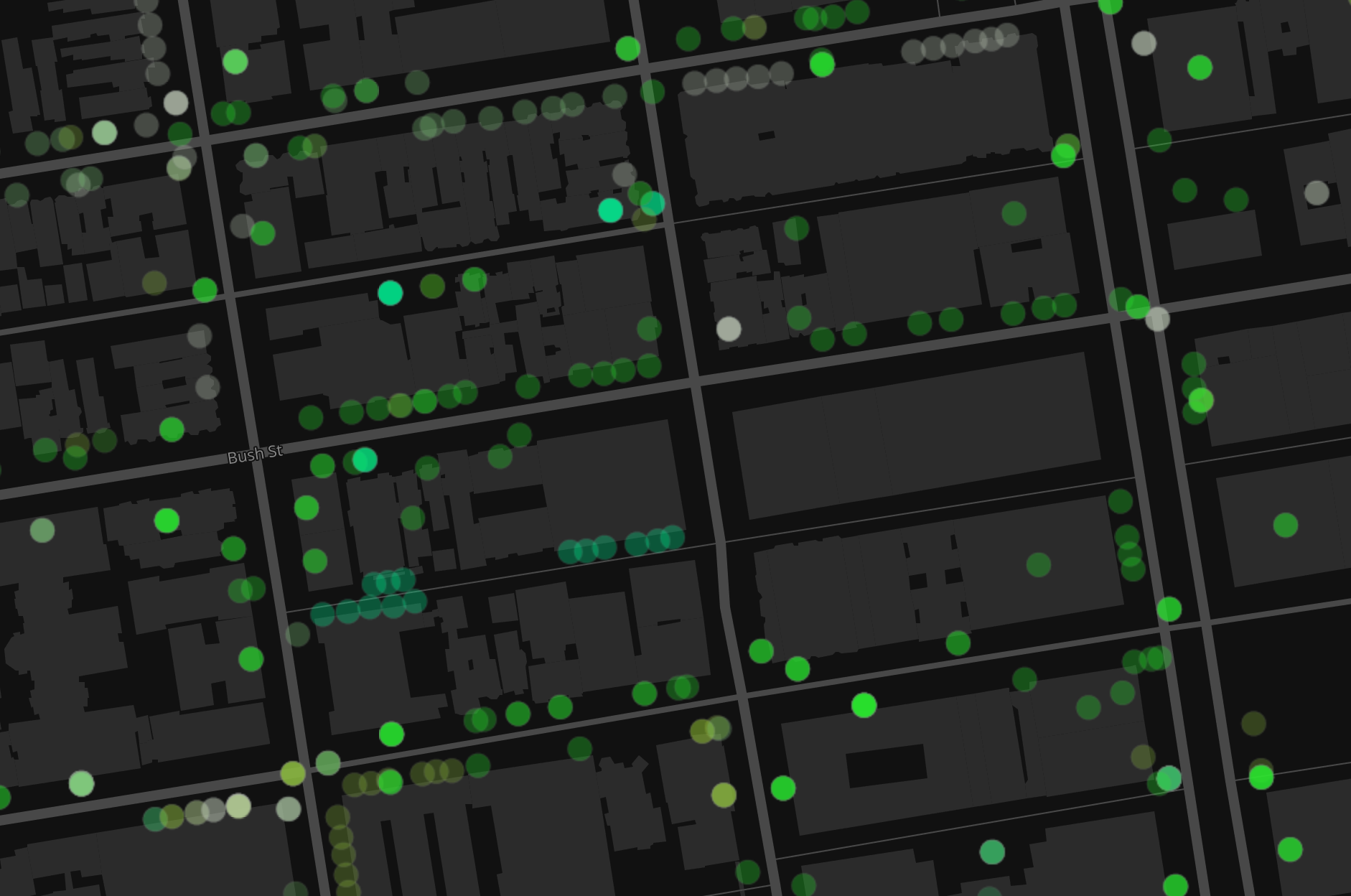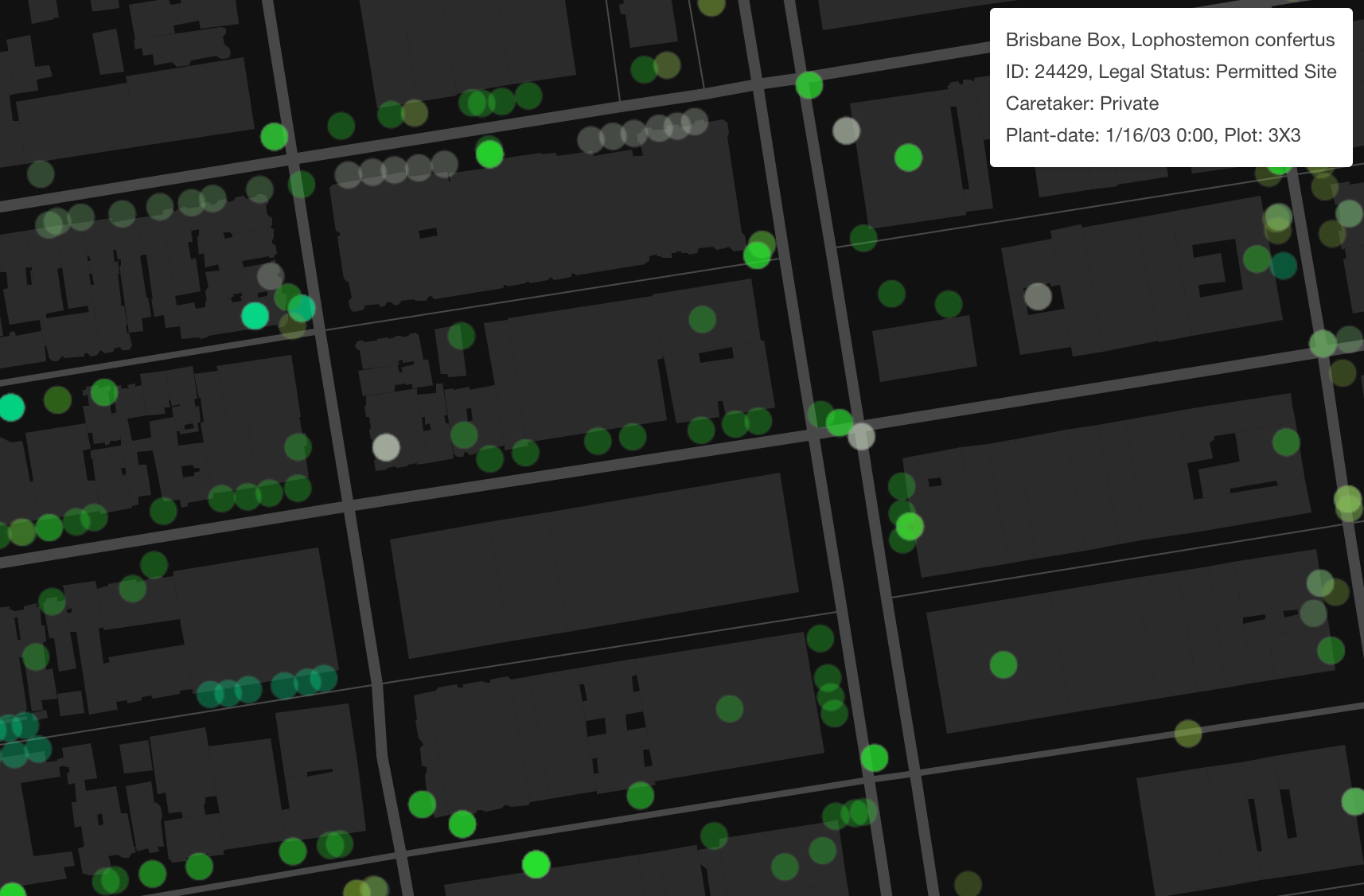Mapping Jersey City II: Every Building →
SEE IT LIVE (PREVIEW BELOW). SEE THE CODE.
If no map appears below (if there's a white background) it's probably because you need to enable WebGL in your browser.
It's been a long-term dream of mine to map every building in Jersey City. See my last post for more about why. I reached out to the Office of Innovation to see how to go about doing it and they gave me the green light, so I had to pull the trigger.
Once I created the building footprints using the process documented in my last post (these polygons now live in OpenStreetMap) I used QGIS to merge on several other publicly available datasets from the city including zoning, wards, and parcel information. I did my best to make the data comply with the Project Open Data Metadata Schema v1.1 as per their request.
The zoning and wards merges were extremely clean and easy. The parcel merge was not, to say the least. There are often many buildings inside one parcel (Mun-Bloc-Lot-QCode) or many parcels inside one building. In the first case, I allowed buildings to inherit all parcel information. In the second case, I populate the Lot and Bloc fields with "MANY" as necessary. QCodes, which identify the smallest parcel boundary, were almost never uniquely identifying, so I exclude them. Mun-Bloc-Lot is sufficient to join with county assessment and tax information.
I completed the parcel merge by calculating building centroids and spatially merging those with parcel polygons (preserving a unique building identifier). I experimented with other methods (like parcel centroids inside building polygons), but I found this method to be the cleanest and require the least manual clean-up. I found the realcentroid plugin extremely helpful, considering some geometry irregularities. I also found the QuickMultiAttributeEdit plugin to be extremely useful for updating the fields on a few objects that merged sloppily.
I used one of my favorite plugins, qgis2web, to produce a quick and sloppy Open Layers 3 web map to immediately send to my favorite people. Unfortunately, I don't think the plugin is equipped for a dataset this large, so I wasn't able to use it to produce a Leaflet map (my preference). A little formatting with the Table Manager plugin and I sent the data off to the city with a data dictionary. They're in the process of putting it up on the Open Data Portal now.
Finally, I uploaded the geojson with footprints and all of the merged fields into Mapbox studio as a tileset. I added it to two styles: one dark basemap and one satellite imagery layer with semi-transparent road information. Finally, I used Mapbox GL JS to code the map shown above. I added an overlay and a legend, and functionality to click on buildings for their information, and toggle between my two basemap styles. I then agonized over colors, added Google fonts, and promptly went to bed.
Things to do and problems to solve:
(1) To solve: It would be great to see the whole city at once, but the dataset is so large that Mapbox enforces that it only be viewable from zoom >=14. I don't love having to pick one part of the city to focus on (at least for the default view), especially because I'm not interested in promoting a downtown-centric image of Jersey City. For now I've settled on what I think is a readily recognizable part of the city. I would love advice on how to manage this.
(2) To do: Add more data, starting with addresses. This shouldn't be too tricky with some geocoding. This will also make dealing with messy parcel data (and recovering QCODEs) much easier. If I can get that done, then I can merge on parcel information from the county including owner information, building codes, year built, and building/land assessments. This is definitely feasible (and is just a matter of time). I'd also like to add links to specific, relevant sections of the zoning code for each building. That's another no-brainer.




